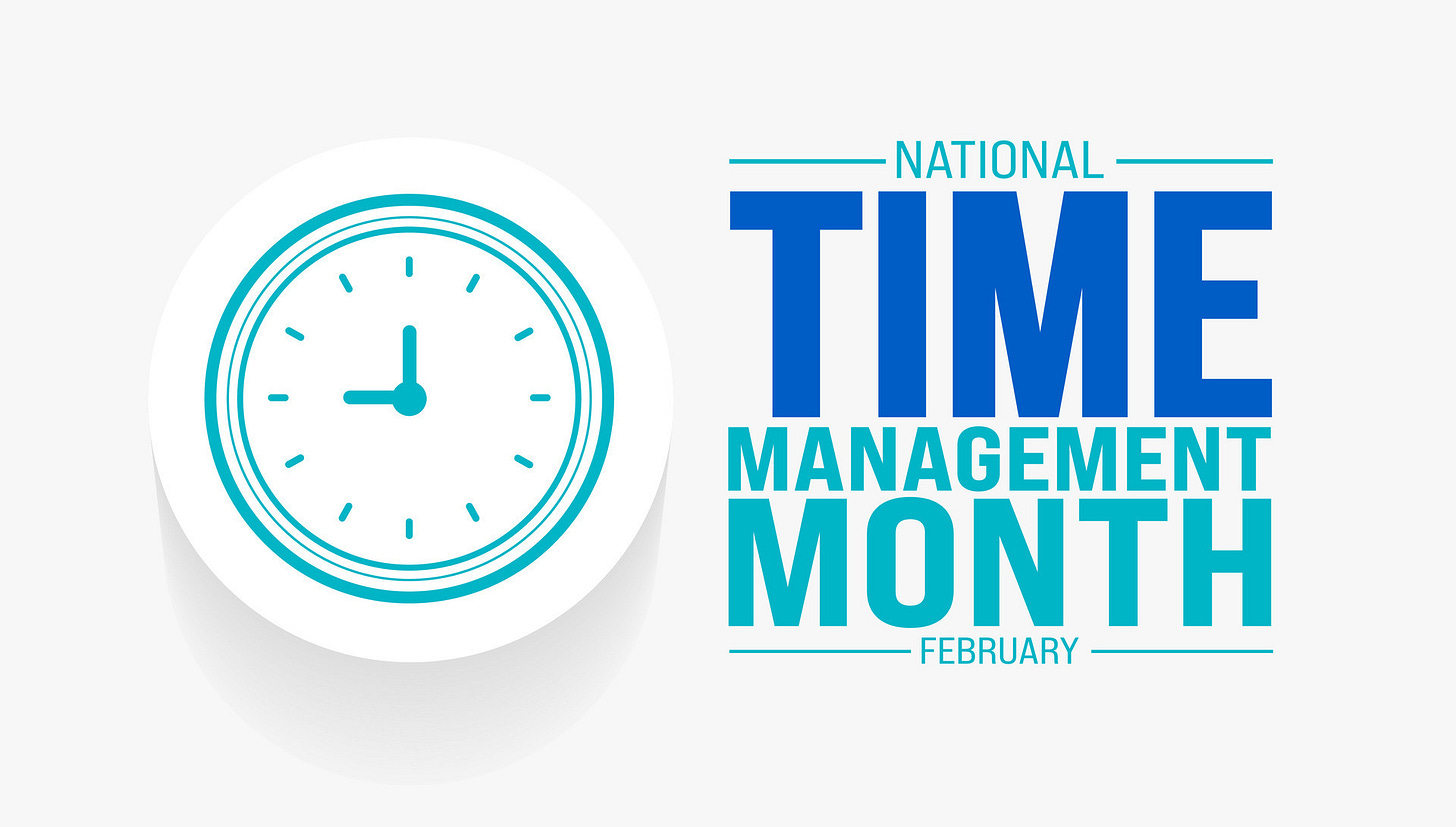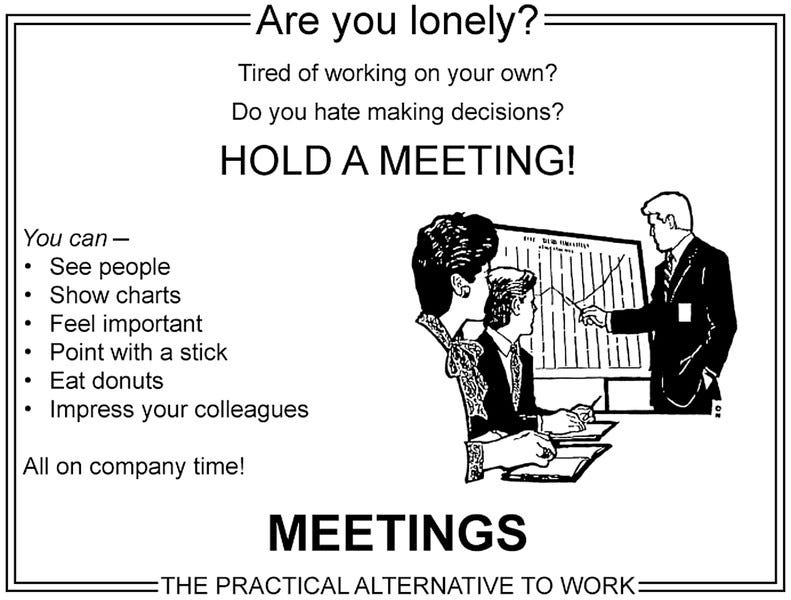National Time Management Month
February marks National Time Management Month, a period dedicated to optimizing how we utilize our most precious resource: time. While the origins of this observance remain a mystery to me despite a bit of googling, its significance goes beyond efficiency—time management is about maximizing impact, especially for nonprofits.
In the hustle and bustle of our nonprofit endeavors, it's easy to fall into the trap of equating time management with doing more with less. However, true time management isn't about cramming more tasks into our schedules; it's about prioritizing the most impactful activities and consciously choosing what not to do. This edition of Jani’s Journal is dedicated to Time Management (a.k.a. prioritization), offering practical tips to utilize your time wisely and make a meaningful impact both at work and at home.
Tip #1: Create A “To-Don’t List.” Those that have worked with me know I’ve maintained a To-Don’t List for years. It started as a joke; a list of things that had been on my to-do list for so long I’d given up hope of ever completing them. Over time, it’s morphed into a functional list of nice but not mission-critical ideas I’ve granted myself permission not to engage in at the moment. This simple act of prioritization has liberated me from the guilt and stress of not doing it all while I focus on what truly matters.
Want to amplify your nonprofit's mission and impact more lives? You’re in the right place! Jani’s Journal is where nonprofit heart meets business savvy mind.
Don't forget to share your favorite article with a friend, or post it on LinkedIn, Facebook, Instagram, and beyond. Sharing Jani’s Journal is caring!
Jani’s Jackpot!
If you only have time to read one article, Jani’s Jackpot promises the ultimate payout!
🔗 Steven Covey's Time Management Matrix 🔗
This Jani’s Jackpot article by David Gousset is one of the better summaries of the single most impactful prioritization tool I’ve used for over fifteen years: Steven Covey’s Time Management Matrix. By categorizing tasks based on their importance and urgency, Covey's matrix empowers you to focus on Quadrant II activities—those that are important but not urgent—thereby maximizing your productivity and impact. Once you’ve set aside time for Quadrant II tasks, fill in with Quadrant I as they emerge throughout the week, delegate Quadrant III to the greatest extent possible, and minimize Quadrant IV. For nonprofits, ensuring that your specific role’s mission-critical tasks reside in Quadrant II is paramount.
Time Wasters
The above cartoon and articles below highlight two time wasters that usurp valuable time resources: ineffective collaboration and unstructured decision making. Even if you’re spending time on Quadrant I or II tasks, doing so with ineffective collaboration and unstructured decision making keeps you from other Quadrant I or II tasks.
🔗 If We’re So Busy, Why Isn’t Anything Getting Done? 🔗
McKinsey & Company's article exposes the pitfalls of unproductive collaboration, a common time drain in both corporate and nonprofit settings.
“Interacting is easier than ever, but true, productive, value-creating collaboration is not. And what’s more, where engagement is occurring, its quality is deteriorating. This wastes valuable resources, because every minute spent on a low-value interaction eats into time that could be used for important, creative, and powerful activities.”
I find this to be even more common among nonprofits as many nonprofit leaders lack formal training on strategic communication, facilitation skills, and associated technology. McKinsey offers a quick guide to deciding the best collaboration method based on the type of interaction and what needs to be accomplished. Over the next month, try consulting this simple chart when scheduling meetings to streamline collaboration efforts and embrace effective communication strategies to reclaim your valuable time.
🔗 Time Management Won't Save You 🔗
The title of this Harvard Business Review (“HBR”) article almost made me change the theme for this edition of Jani’s Journal! But in reading the article it highlights a common time waster: unstructured decision making. HBR lists three ways to increase structure for more effective decision making:
Reduce the volume of tasks by recognizing that a to-do is an agreement about completion, not necessarily priority. Negotiate the priority (even if it’s with yourself).
Replace decisions with principles to reduce the cognitive load of multiple decisions. For example, instead of having to pick and choose which 4:30 p.m. meetings are important enough, short enough, with certain customers or stakeholders, possible to do on the phone vs. in person, etc. stick to the principle that I don’t miss 5:30 p.m. baseball practice. Suddenly, all the variables become more clear when weighed against a steadfast principle instead of the many possibilities.
Use structure, not will power, to minimize distractions. For example, I structure my calendar to include standing weekly check ins with each of my direct reports. They are always in my Quadrant II. While it doesn’t preclude them from emailing, calling, or texting any time they need something, it reduces these impromptu communications to the truly emergent issues because they know I’ve already carved out time for them on a specific day. Another example from the HBR article: turn off your wi-fi to avoid email or chat distractions rather than fighting the urge to respond every time a notification pings.
Fostering Time Management in Others
🔗How To Help an Employee Who Struggles With Time Management🔗
This little gem from HBR offers practical strategies for developing time management skills in team members. Alternatively, if you are the one struggling, try working with your manager to implement some of these strategies. I’m sure they’ll appreciate the initiative!
Acknowledge your own emotions around the frustration of missed deadlines, last-minute deliverables, untimely email responses, etc.
Assess your contribution to the problem such as giving last minute assignments, providing unclear direction, failing to set priorities, overlooking opportunities for feedback along the way, etc. This supports a conversation about what you both can do to support the person’s development.
Pinpoint your stressors to better define needed priorities and communicate those needs. For example, are you stressing about the one particular deliverable upon which other departments or your boss are depending? Be sure to communicate this priority and why it’s a priority.
Help at the start so they can keep momentum going. HBR ideas to get started:
“Work with them to prioritize the work
Brainstorm the direction to take
Talk through the smaller parts
Set up intermediate milestones
Do some of the work with them in a meeting
Team them up with colleagues
Request daily updates on what they planned to do and what they’ve accomplished.”
Time Management Systems
🔗 Ruthless Prioritization 🔗
I can’t resist a good system or process! I think it’s why the principles and practices of project management resonate with me. This article from the Project Management Institute’s library by Dharma Mehta gives a nod to Covey’s matrix but applies it to prioritizing which projects to undertake within an organization or department. With nonprofits often feeling the pull of mission expansion or chasing grant funding, ruthlessly prioritizing what projects to complete avoids being spread too thinly or the mission being diluted. Highlights of ruthless prioritization:
Remove sentiment from the decision. The article quotes Meta’s former COO Sheryl Sandberg, “Lots of times you have very good ideas but they’re not as good as the most important thing you could be doing. And you have to make the hard choices.” Those hard choices must be data driven, not sentiment driven.
Use a prioritization matrix to assist in decision making. Instead of importance and urgency, this matrix uses impact and effort with high impact-low effort projects being prioritized.
Be firm but flexible. The prioritization matrix may change over time as new information is obtained or new issues develop. Be firm in the idea of objectively following the matrix, but flexible in understanding the data regarding effort and impact is dynamic.
Recognize the cost of trying to do it all. Just like a person wearing too many hats cannot excel at any one of them, an organization juggling too many projects executes none of them efficiently, effectively, or with high quality which wastes valuable time and financial resources. No nonprofit can afford that!
🔗 Getting Things Done (GTD) 🔗
This article by todoist.com details another popular time management system developed by productivity consultant David Allen and widely used since the early 2000’s. While more popular systems have replaced it, there continues to be fundamental elements useful today. These include the principle that, “the more information bouncing around inside your head, the harder it is to decide what needs attention.” Reminiscent of the fact that the human brain can only hold 5-7 chunks of information in its short term memory, the GTD system has a critical first step: capture everything that crosses your mind using whatever capture method works best for you (write it down, email it to yourself, put something in a file folder, etc.). The graphic below highlights the remaining four steps.
I hope at least one of these the time management principles, prioritization matrix, or productivity tools resonated with you…now go decide what’s in your Quadrant II and make it happen!
Know a colleague or friend that would like at least one of the articles in this edition of Jani’s Journal? Sharing IS Caring!












